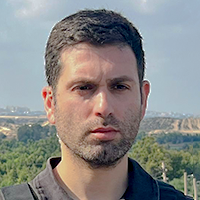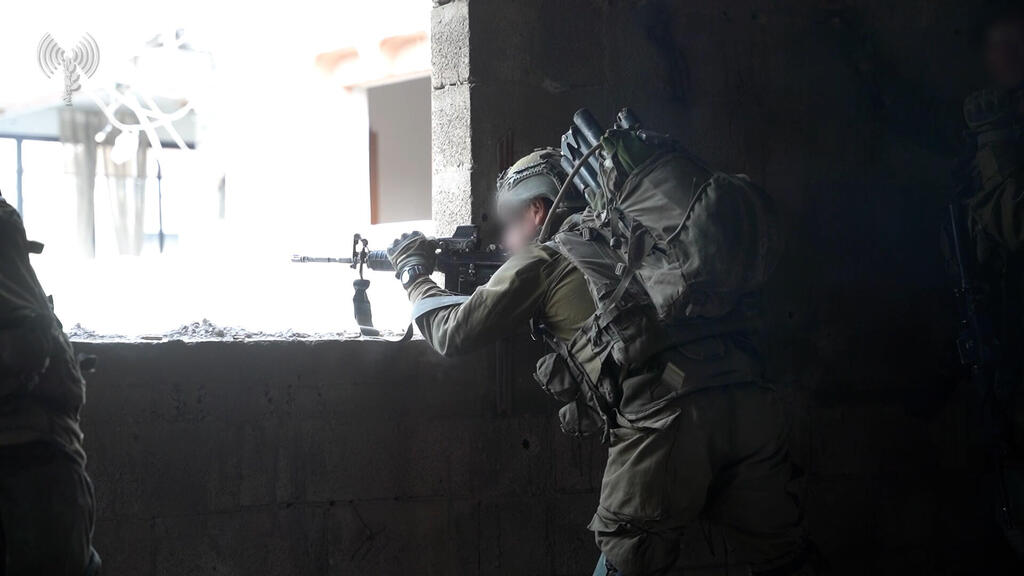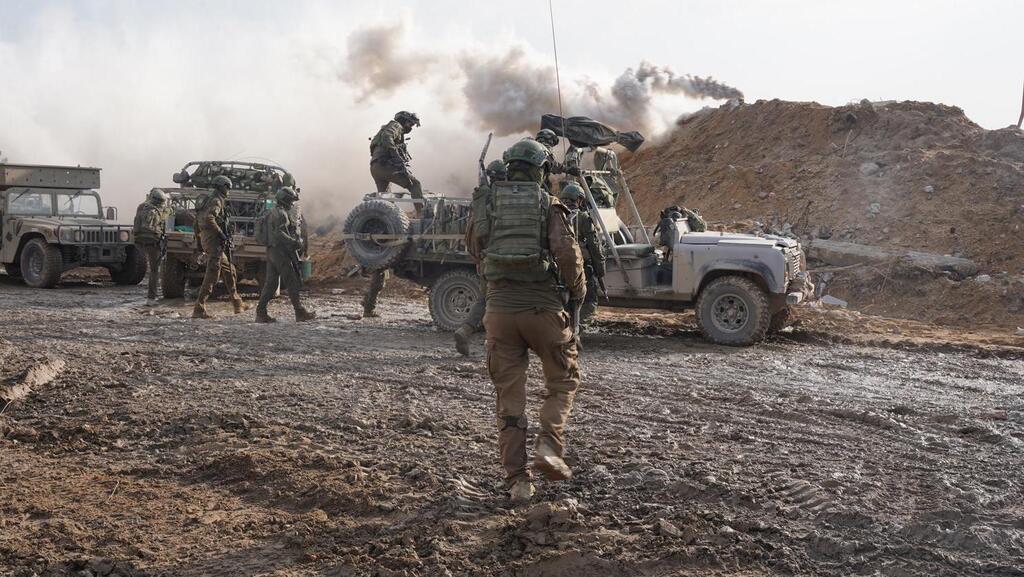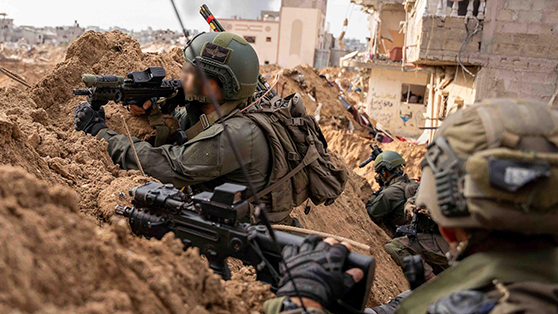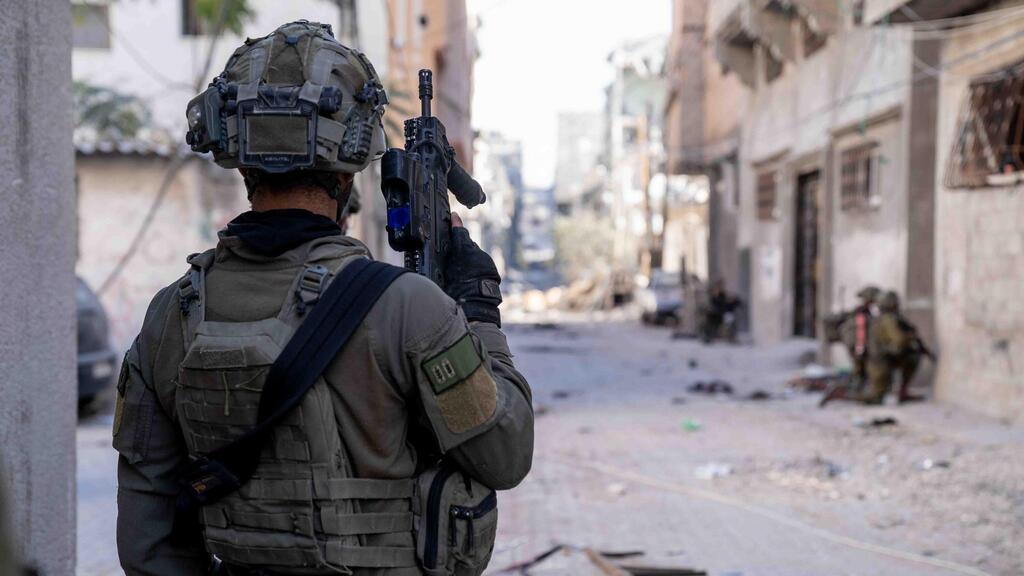Tens of thousands of Hamas terrorists and endless military equipment are concealed within hundreds of underground facilities and structures in neighborhoods throughout the Gaza Strip, leaving the IDF no choice but to face them in close-quarters combat.
More stories:
The military is aware it doesn’t have the capability to eliminate Hamas terrorists and infrastructure from the air due to large number inside of the Strip. Combat soldiers from various IDF units have recently completed a second week of operations in the notorious Shijaiyah neighborhood in eastern Gaza City, where Hamas's most powerful battalion operates.
Analysis of the ground offensive in Gaza teaches how complex the fighting in these strongholds is. Armored vehicles and artillery brought in as part of the operation entering the neighborhood last week all failed to penetrate the narrow streets.
IDF bulldozers demolish parts of the structures, though this too is challenging; soldiers base a significant part of their mission on patrols between houses and other empty structures. In most cases, the buildings are bombed ahead of time with military intelligence indicating terrorists are fortified inside them.
"There are many encounters and incidents like these in the Gaza Strip daily, with officers and commanders making split-second decisions, and in most of them, we prevail over the enemy and eliminate them without casualties on our side," the IDF said.
"We use heavy firepower, but doing so isn’t always simple in densely populated neighborhoods, especially when one unit operates adjacent to another. We will continue operating in every Hamas stronghold, and more challenging battles are expected. This will not weaken our resolve or our desire to complete the mission.”
The essential question raised is why doesn’t the IDF conduct a thorough demolition in these streets that would reduce the need for soldiers operating in the area. In practice, such a plan isn’t realistically feasible for several reasons.
Five reasons why the IDF avoids demolishing Gaza
Firstly, the military can’t target all terror facilities and bases above and below the ground in the Gaza Strip. According to estimations, hundreds of thousands of such targets exist. The IDF, aside from the limited time has relied on targeting Hamas from the air for over a decade.
These aerial campaigns have failed not only in terms of deterring the enemy but also in their effectiveness. Over time, Hamas grew to become an imposing terrorist force. In the past month alone, the ground offensive revealed dozens of torpedo anti-submarine missiles, as well as dozens of strike drones, which would’ve been deployed against Israel at a different time if not for the war.
Secondly, most of the micro-tactical targets, are unknown to IDF military intelligence, and therefore ground scanning and clashes in the area are required to reach and eliminate them.
Thirdly, airstrikes aren’t an effective measure against every house that has 30 RPG rocket launchers, five Dragonov sniper rifles, and eight large explosive charges. The house may collapse or be damaged, and some of the charges may explode, but the bulk of the ammunition will likely remain usable amidst the rubble. Hamas also hides ammunition in relatively secure places before it’s used in combat.
A fourth reason is rooted in the basic desire to eliminate terrorists. Hamas's terrorist army had, at the onset of the war, approximately 30,000 armed and organized operatives. Other terrorist organizations in Gaza, like the Islamic Jihad, have a few thousand more.
This week, the IDF estimated that around 7,000 terrorists have been killed. The IDF acknowledges that not all terrorists will be eliminated by the end of the war, which, in the best-case scenario, will continue until the end of January 2024. Following that, fighting will continue throughout 2024 with limited raids into the Gaza Strip, attempting to prevent Hamas from rebuilding.
The issue in this, however, is different. Hamas instructs its operatives to temporarily hide underground until the end of the war. There are thousands of underground structures, some connected to each other through narrow passages of 40-30 meters, while others are isolated. They constitute Hamas’ defensive efforts, which are destroyed if and when the IDF locates them.
"We have to operate selectively, we don’t completely destroy every tunnel shaft we find, and certainly don’t send soldiers into them. It will take years to completely clear the entire Gaza Strip from the enemy," said IDF commanders participating in the ground offensive. "Therefore, we focus on hitting important structures and killing Hamas’ commanders. The terrorists and their equipment in the Strip are endless, unlike our timetable for the War."
Hamas terrorists hiding in underground tunnels attempt to attack IDF forces when they identify such an opportunity, when troops are less alert or exposed. In most cases, these encounters end with the killing of the terrorists with no Israeli casualties.
The fifth reason why the IDF does not demolish the entire Gaza Strip, beyond the fact that doing so would lead to the killing of thousands of uninvolved civilians, is that the military needs further intelligence on Hamas.
This intelligence is necessary not only for critical information about the locations of senior leaders in the organization or the location of Israeli captives. Recently, Golani Brigade soldiers arrested two Nukhba force terrorists who provided valuable intelligence to the IDF, leading to airstrikes on important targets.
Hitting these targets has an effect on the moral of the terrorists, causing some to surrender or fight recklessly, against IDF soldiers. There is also significant value, in the acquiring of intelligence materials such as maps and documents, with the information often coming from terrorists who are questioned in custody. Demolishing the entire Gaza Strip, as the Russian Air Force did in Syria, would prevent this, while also being unrealistic.



